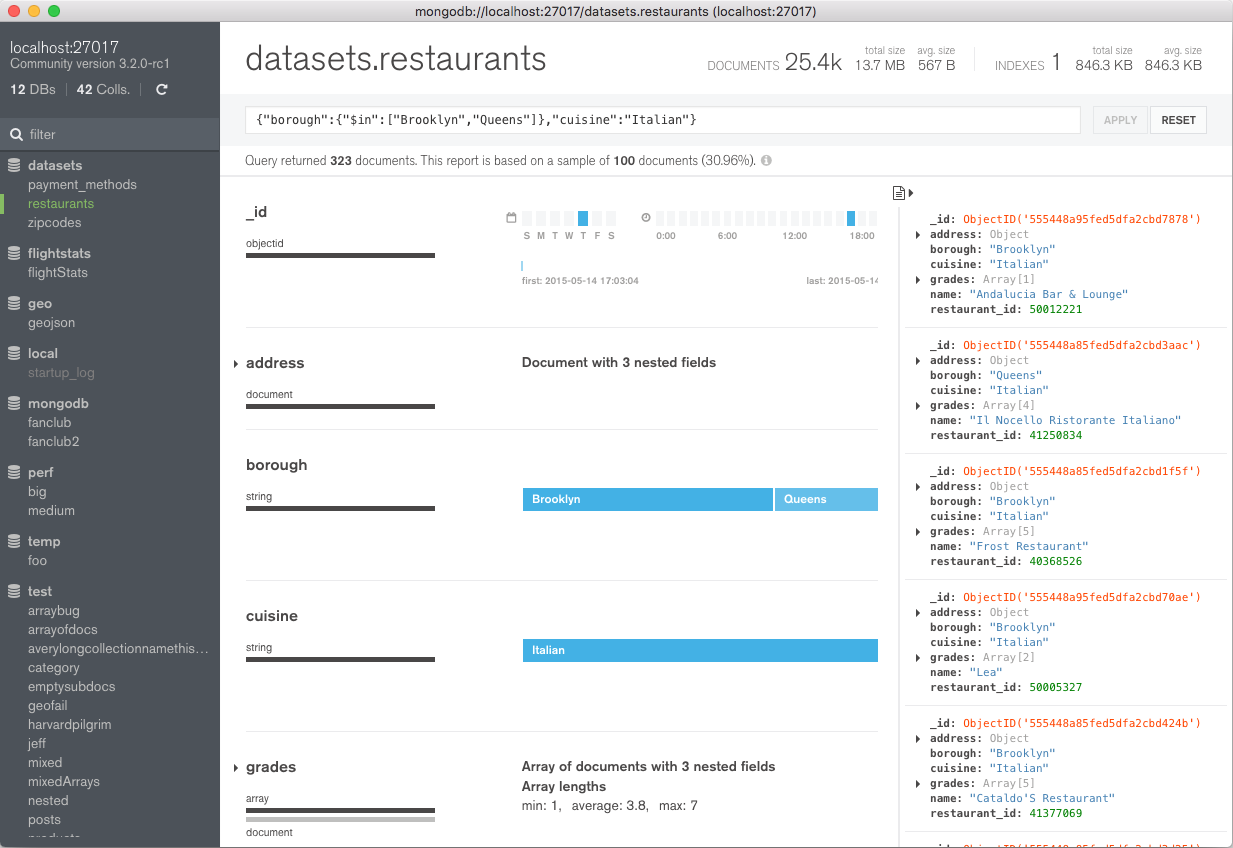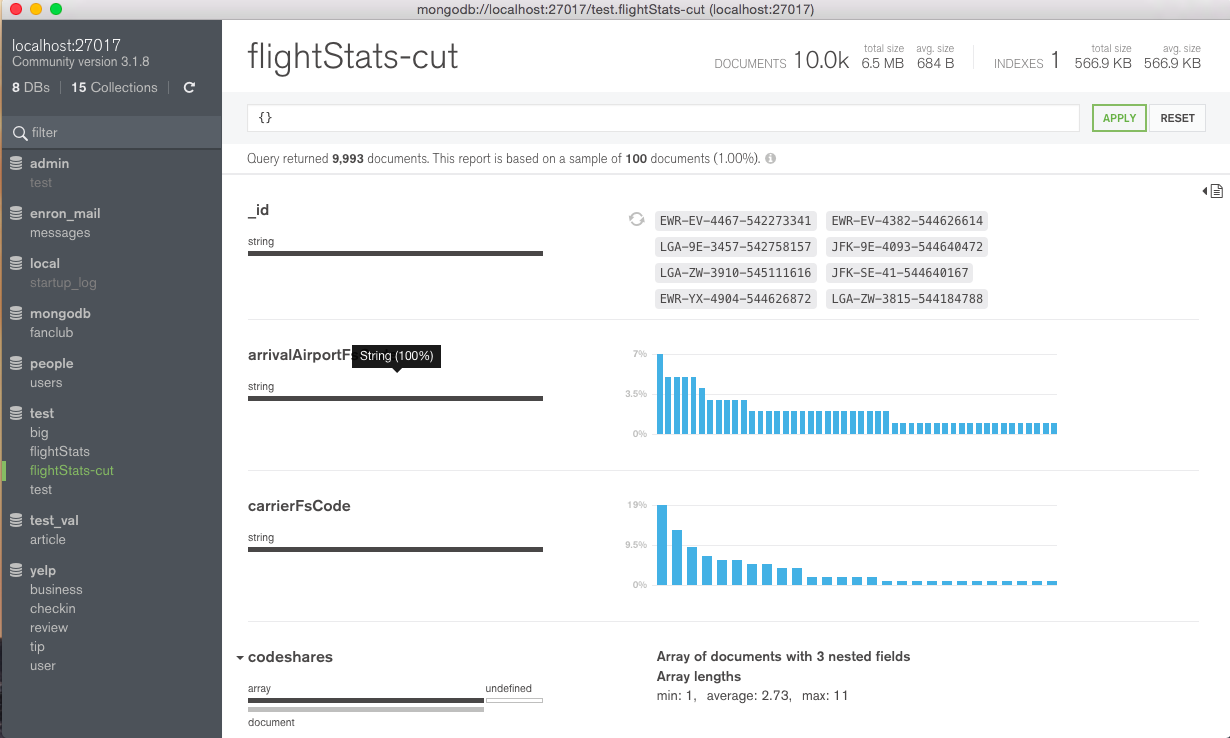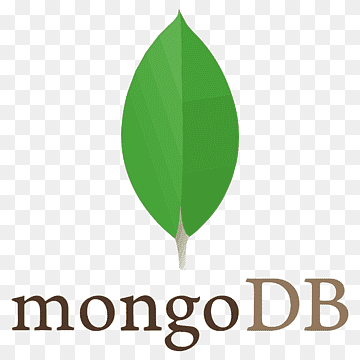Applications of MongoDB Database Management System
MongoDB is a popular open-source document-oriented NoSQL database management System that provides flexibility, scalability, and high performance.
MongoDB uses a document-oriented data model, which means that data is stored as documents rather than in tables and rows like traditional relational databases. Each document consists of a set of key-value pairs, where the key identifies the data element and the value contains the data itself. Documents can be nested and contain arrays and other complex data types, making storing and retrieving complex data structures easy.
In contrast to relational databases like MySQL, which uses tables and columns to store data, MongoDB uses collections and documents to store data. This database management System benefits from high scalability, distributed support, advanced search capabilities, and fast data access.
MongoDB is also widely used to develop web and mobile applications. It is very popular because it can create cloud databases and support various programming languages, such as JavaScript, Python, and Java.
Overall, MongoDB is a powerful and flexible NoSQL database management System that is well-suited for many applications and use cases. Its flexible data model, scalability, and performance make it a popular choice for developers who need to store and retrieve complex data structures quickly and efficiently.
History
MongoDB was developed by MongoDB Inc., founded in 2007 by Dwight Merriman, Eliot Horowitz, and Kevin Ryan.
Merriman and Horowitz came up with the idea for MongoDB while working on a web application platform called DoubleClick (later acquired by Google). They found that the existing relational database management systems were not well-suited for their needs, as they required a lot of time and effort to set up and maintain. They also found that these systems did not scale well with the growing amounts of data they were dealing with.
To address these challenges, Merriman and Horowitz began developing a new database System that would be more flexible, scalable, and easy to use. They focused on a document-oriented data model, allowing them to store data in a more natural, hierarchical Format rather than tables and rows like traditional relational databases.
2009 MongoDB was released as open-source software under the GNU Affero General Public License. The software quickly gained popularity among developers, who appreciated its flexibility, scalability, and ease of use. MongoDB Inc. was founded in 2010 to provide enterprise-level support and services for software.
Since its release, MongoDB has become one of the most popular NoSQL databases. It is now widely used across a range of industries, including finance, healthcare, and e-commerce. MongoDB continues to be developed and maintained by MongoDB Inc. and a large community of contributors.
Applications of MongoDB
MongoDB is one of the most popular NoSQL database management systems for various applications, including web, mobile, the Internet of Things (IoT), e-commerce, and more. In the following, we will mention some of MongoDB’s uses and advantages.
Application of MongoDB on the Web
MongoDB is a NoSQL database management System used for various web applications. Several use cases include:
1—User data storage: MongoDB is suitable for storing user information in websites and applications. Its flexible data structure allows developers to store and retrieve data more easily and flexibly.
2—Video and image storage: MongoDB is very suitable for storing large files such as video and images. By default, this database uses the GridFS format for this purpose.
3- Content-based web systems: MongoDB is very suitable for storing and managing the content of websites and content management systems (CMS). For example, the KeystoneJS content management System uses MongoDB for fast and simple website Development.
In general, MongoDB is very suitable for applications requiring more data storage flexibility and for applications that store large and complex data.
Application of MongoDB in Mobile
Among MongoDB’s mobile applications is storing mobile data and syncing it with the server. Considering that mobile devices have more limited resources than servers, using a flexible and high-speed database plays an important role in improving the performance of mobile applications.
MongoDB is a NoSQL database suitable for mobile applications because it has an object-oriented structure and high flexibility. Since mobile data can be stored online and offline, MongoDB can easily synchronize offline data with the server with data sync capabilities.
MongoDB is also suitable for mobile data processing, as it has features like set lists, text search, and advanced analytics. In addition, using MongoDB Realm, you can easily connect the server and client sides, helping mobile applications process data more quickly and accurately.
Overall, MongoDB is suitable for mobile data storage and management with high speed and flexibility.
Application of MongoDB in the IOT

MongoDB is well suited for Internet of Things (IoT) applications. In IoT, various devices such as sensors, medical devices, industrial devices, etc., use different sensors and devices to collect data. This data is very sensitive and needs to be stored securely.
MongoDB is well-suited for storing IoT data because its flexible data structure allows developers to easily store and retrieve their data. It is also very suitable for Internet of Things applications due to its high coordination capability and stability.
Using MongoDB in IoT applications makes storing sensitive data securely and reliably possible. It also helps analyze data to identify new patterns in IoT data. MongoDB allows developers to work with data and respond dynamically to new data easily.
Application of MongoDB in E-commerce
MongoDB is well-suited for e-commerce applications. In e-commerce, data such as customer information, orders, products, and ratings are very important for e-businesses. MongoDB is very suitable for storing and managing this data with its high reliability and synchronization capability.
You can store and retrieve your data dynamically and quickly using MongoDB. Also, MongoDB allows developers to work with data and respond dynamically to new data easily. In general, these applications include:
1- Customer information storage: MongoDB is very suitable for customer information storage. Using MongoDB, it is possible to store customer data and dynamically respond to new data.
2- Processing orders and financial transactions: MongoDB is suitable for storing orders and financial transactions. Using Mongo
In DB, it is possible to store orders and financial transaction data dynamically and respond to new data dynamically.
3- Data analysis: MongoDB is very suitable for e-commerce data analysis. Using MongoDB, it is possible to analyze e-commerce data and respond dynamically to new data.
MongoDB Interface and Operating Systems
The most popular operating systems supporting MongoDB include Windows, macOS, Linux, FreeBSD, and Solaris. Therefore, developers can install MongoDB on different operating systems to store and manage their data.
MongoDB uses a management panel called MongoDB Compass to manage data. This desktop application allows developers to easily manage their data and explore their MongoDB databases.
The MongoDB Compass user interface is straightforward and user-friendly. On the main page, all databases and their collections are displayed in a tree. Developers can view and edit data by clicking on each database and collection.
In MongoDB Compass, developers can write the queries they need to retrieve data. This tool allows developers to run advanced queries and retrieve their data with minimal effort.
MongoDB Compass is also a tool for managing users and their permissions. Developers can create users, set their access permissions, and monitor user access to data using this tool.
Below are some images of MongoDB Compass:


Comparison with Other Database Management Systems
MongoDB is a tableless database management System (NoSQL) that differs from relational database management systems (RDBMS). In the following, we will compare MongoDB with two relational database management systems, MySQL and PostgreSQL:
1- Comparison with MySQL
MySQL is a relational database management System that stores and manages tabular data. In contrast, MongoDB is used to store and manage JSON-based document data.
In MongoDB, data is stored as documents in the database, and each document can contain one or more sub-documents. This tableless database management System allows users to store their data without defining a data structure. On the contrary, in MySQL, you must first define the tables and their columns and then add data to these tables.
Another significant difference between MongoDB and MySQL is their scalability. MongoDB’s horizontal and vertical scalability can withstand considerable data volume growth. In MySQL, vertical scalability is used, which means increasing the hardware to increase the data volume.
In general, MongoDB and MySQL differ in terms of data structure and storage method. MongoDB is suitable for unstructured data, and MySQL for tabular data.
2- Comparison with PostgreSQL
PostgreSQL is a relational database management System that stores and manages tabular data. In contrast, MongoDB is used to store and manage JSON-based document data.
One of the main differences between PostgreSQL and MongoDB is their parallel processing capabilities. In PostgreSQL, parallel processing is more limited, and data is processed using an ACID transaction processing-based method. In contrast, MongoDB’s parallel processing capability is much higher and allows users to process data in parallel and at a very high speed.
Another significant difference between PostgreSQL and MongoDB is their scalability. MongoDB’s horizontal and vertical scalability can withstand large data volume growth well. PostgreSQL also has horizontal scalability, but vertical scalability is much stronger.
Choosing between MongoDB, MySQL, and PostgreSQL depends on your specific needs. MongoDB is a good choice if you have unstructured and highly scalable data. If you have tabular data that can process ACID transactions, MySQL or PostgreSQL can be good options.

